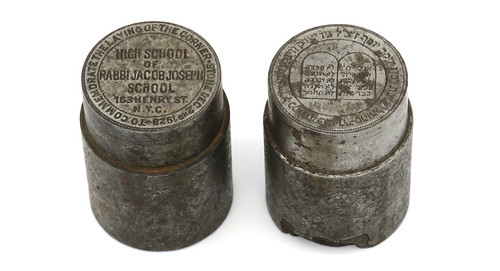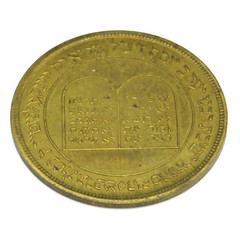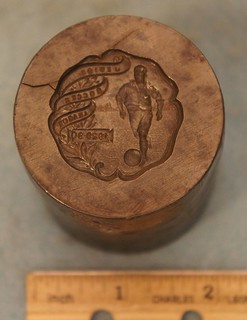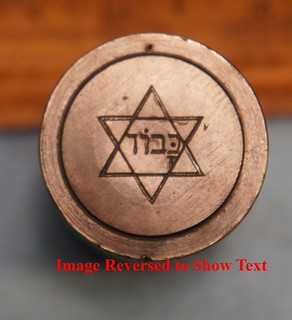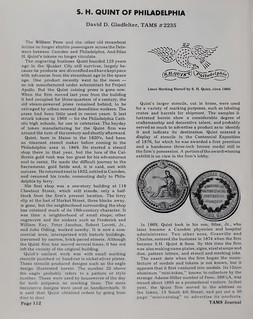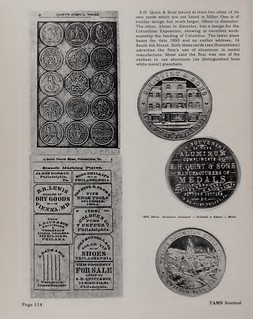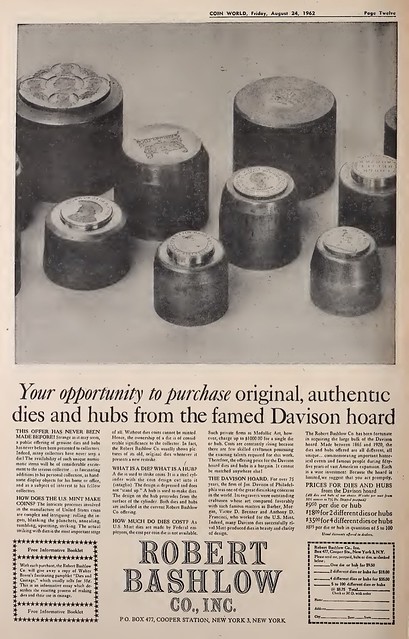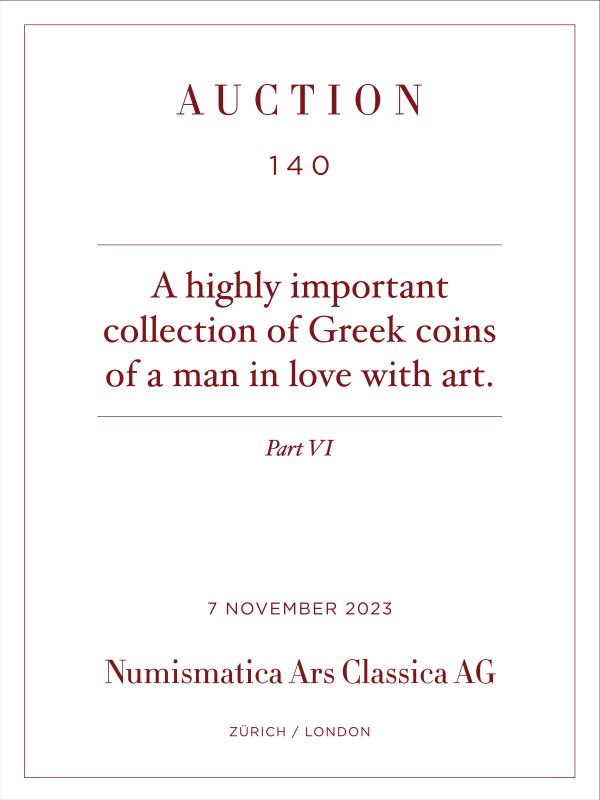
PREV ARTICLE
NEXT ARTICLE
FULL ISSUE
PREV FULL ISSUE
SOME OBSERVATIONS ON TOKEN DIESEarly last month I came across this listing on an auction site and reached out to reader Heath White for his thoughts. Heath has acquired large troves of old token, medal and ornamental dies, and sold many through an eBay dealer. Here's our exchange. [NOTE - the die images on the auction site must have been reversed for readability.] -Editor [B]rass token is 33mm. Each die is made of solid steel and each weighs 12 ounces. One die is marked on the side "L STEEL" as seen in one of the last photos. From 1928. Entirely HAND ENGRAVED in mirror image! Imagine how talented the engraver had to be to make the side with the Hebrew (there is Yiddish too), in mirror image! He did such a beautiful job, he not only must of been Jewish, but likely was raised with an Orthodox religious upbringing. In general, American token and medal dies dating from before 1950 were destroyed or thrown away after minting stopped. I have never seen dies for an American Jewish token or medal anywhere. None have ever appeared at auction and none are in any museums, including the Jewish Museum of New York, Metropolitan Museum of Art storage holdings, etc. The fact that these dies were not destroyed means they meant something to someone, maybe the engraver himself kept them? They would be an impressive "resume" for future engraving jobs when the die with the Hebrew + Yiddish were shown. This is truly a once in a lifetime chance to own such a grouping. Brass token is included in this sale with the dies. Wayne: Did these come from one of your earlier sales? Heath: No, these dies were never in my collection. Wayne: Have you encountered many dies with a connection to Jews or Jewish institutions? Heath: Many, no. . . I've had a few and they are not dies I would keep in my core collection. If you count Shekels used by Royal Arch Masons I've had many hundreds of dies with Jewish symbols on them. Wayne: What do you make of this? Heath: Some quick observations below:
The lot did not sell. When Heath returned to his office he added these notes. -Editor Overall, they are a nice pair of dies that would clean up nicely. I hate when a dealer, auction company, or any seller makes false statements when the reality is they don't know what they are talking about. The likely buyer for these is not a die collector. As such, these false statements get repeated as fact because they are believed to be true by a naive buyer. I just looked at Worthpoint and quickly found these examples of die sales with Jewish connections:
To read the complete Worthpoint descriptions, see:
I was unable to connect these dies with the S H Quint company based on the information I have. Attached is a listing of the dies sold by David Gladfelter in 1973 along with a copy of an article David wrote for TAMS in June 1972. David auctioned off 70 dies, he kept 25 for himself, and there were an estimated 10,000 dies total that Quint had available for sale. I have some military related Quint dies in my collection and have seen others not sold by David. Dies from different manufacturers often have different characteristics that are unique to that manufacturer. For example, attached is an ad for dies from J K Davison sold by Robert Bashlow in 1962. If you look at the shape of the dies and how the dies are turned down for a collar and compare them to the Jewish NYC school dies you can see they are clearly a different style. Davison also put a chamfer at the top of their dies, Quint didn't. This is what I am looking at when I say they look like Quint dies. I can rule out Davidson, Schwaab, and numerous other manufacturers simply based on the way the dies were manufactured. Heath kindly provided a copy of Gladfelter's June 1972 TAMS Journal article (two pages shown here) and an August 24, 1962 Robert Bashlow Coin World ad for Davison hoard dies (well worth an article in itself). -Editor
To read the complete lot description, see:
Wayne Homren, Editor The Numismatic Bibliomania Society is a non-profit organization promoting numismatic literature. See our web site at coinbooks.org. To submit items for publication in The E-Sylum, write to the Editor at this address: whomren@gmail.com To subscribe go to: https://my.binhost.com/lists/listinfo/esylum All Rights Reserved. NBS Home Page Contact the NBS webmaster 
|
